Features of odorless chamomile
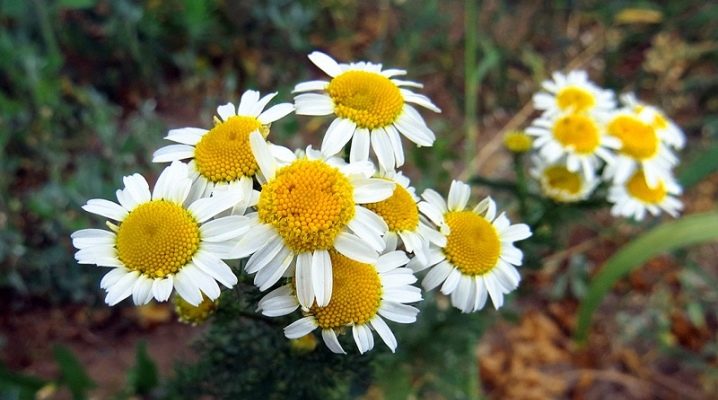
Odorless chamomile is an extremely common weed in central Russia, well known to many gardeners and gardeners, as well as to lovers of traditional medicine. And although outwardly this plant is very similar to pharmacy chamomile, it does not have any medicinal properties, but only harms the crop. Therefore, it is important to be able to distinguish between them in order to prevent overgrowth of the weed and to take appropriate measures to save the garden in a timely manner.
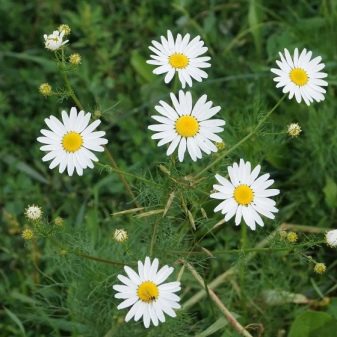

general description
Odorless chamomile (botanical name - Tripleurospermum inodorum) is an annual, in rare cases biennial weed plant, the height of which can vary between 30-80 cm. It belongs to the family Compositae, to the biological group - wintering. Outwardly, it resembles a pharmacy chamomile, but these plants do not even belong to the same genus. In mature, developed three-ribbed plants, the stem is erect, forks in the central part, sometimes this occurs almost at the apex. The root system is pivotal. The lower leaves are attached with short petioles, the rest are sessile and are attached to the stem by their base. At the ends of the branches there are single baskets. It differs from chamomile in the absence of a characteristic odor.
The inflorescences reach 4 cm in diameter, so the peduncles under them are greatly expanded for better fixation. The outer part consists of greenish oblong-lanceolate leaves, the edges of which are framed with a narrow thin border. Inside, they are white and do not have such a border. Along the edges of the baskets, there are false-lingual flowers, sometimes growing up to 5 cm long, and in the center there are numerous yellow tubular, expanding towards the top. The latter fill the entire convex receptacle, up to the outer lobes.
Based on this, the formula of the flower is as follows: Ч4В4Т6П1, where H is the calyx, B is the corolla, T is the stamen, and P is the pistil. The achene has a conical shape, truncated at the edges, slightly convex on the outside. On the inside there are two faces, separated by an edge, on the sides of which there are indentations. The apex is rhomboid with a border in the form of a wavy crown and remnants of a pistil.


In comparison with the wide upper part, the base is strongly narrowed, and its end is truncated-rounded. The hilum is located in the central part of the seed and is rounded in shape. It is surrounded by a raised roller. The area between the ribs is grainy and wrinkled, but they themselves are rough and rough. As for the structure of the seedlings, their developed cotyledons are distinguished by an elliptical rounded shape, and the outer shell is covered with a layer of powdery plaque.
The length can be about 4 mm, while the width does not exceed 2 mm. The first 2 sheets reach no more than 6 mm in size, elliptical in shape, with a slight sharpening, while there are several teeth at the edges. The third with the fourth are considered opposite, differing in the presence of narrow lanceolate lobes. Painted in dark green with a grayish tint.
Three-ribbed reproduces not only by seeds, but also by a vegetative way... The appearance of the first shoots occurs in late August - early September, and in the spring the weed germinates in March-April. Autumn shoots survive the winter in the rosette phase and, when the snow melts, spread the seeds throughout the area. The resulting chamomile develops as spring chamomile.The plant blooms in early summer, mainly at the end of June, and usually bears fruit in July. With good development, one specimen is able to form up to 50,000 seeds, which, after ripening, can germinate from a depth of a couple of centimeters, and under unfavorable conditions remain viable for 6 years. At the end of fruiting, the three-ribbed plant dies off.
When appropriate conditions are created, it quickly takes root with a cut off stem.
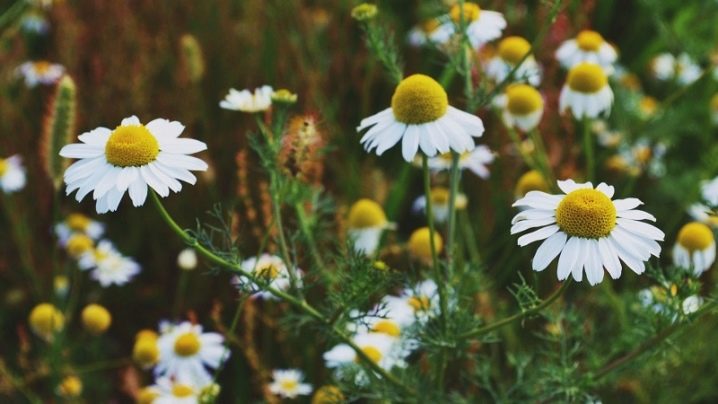
Spreading
Odorless chamomile grows almost everywhere: on the territory of the CIS countries, in Western Europe, North America. At the same time, the main habitat of the plant is the European part of Russia, where, in a favorable season, in some places it can form rather extensive thickets. Three-ribbed grows along the banks of reservoirs, near roads, in meadows and even on mountain slopes, but it is most often found in vegetable gardens and in fields sown with winter wheat and rye, as well as among sparse crops of garden crops. However, with insufficient soil moisture, which is the main condition for its distribution, it passes into the nearest ravines or ravines, where there is at least a little moisture.
Odorless chamomile is a ruderal-segetal weed, that is, it can grow not only in chernozem and soil rich in trace elements, but also in landfills or on the sidewalk near the highway. In some years, when the weather is warm even in autumn, the shoots of the three-ribbed are capable of covering large areas. In the spring, after the snow melts and the soil warms up, they begin to grow rather quickly, increasing the vegetative mass in less than a month. But not only weather conditions contribute to the spread of this weed. Often this happens by the forces of the summer residents themselves. Three-ribbed is easily confused with pharmaceutical chamomile, which is why it is left to grow and multiply freely, exposing garden crops to great danger.
After all, one bush is enough to completely inseminate the entire area for years to come, and the seedlings of this plant can appear throughout the vegetative period.

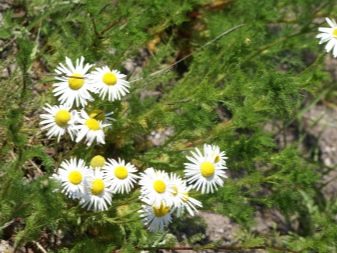
How to deal with weed?
It will be possible to get rid of chamomile on your site only with strict adherence to the following recommendations. In the fall, when shoots appear, you need to dig up the area as soon as possible. Thus, it will be possible not only to temporarily get rid of the weed, but also to use its plant mass as a natural fertilizer.
In the spring, as soon as the soil thaws and new shoots appear, the three-ribbed one must be cut with a hoe or flat cutter. Moreover, the bushes should be dug a little before this, since the stem will have to be cut below the top layer of the soil in order to destroy the growth point of the weed. At the same time, it is impossible to delay weeding, since this plant is distinguished by its rapid development, and if time is lost, it will soon be very difficult to cope with it with one hoe.
In the summer, you also need to regularly weed the area in order to remove the emerging weeds in time. This time of the year is the most favorable for chamomile growth, and in the absence of drought, its shoots will appear periodically throughout the season.

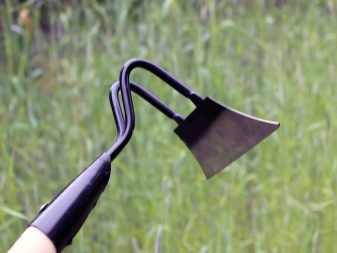
If you have neither the time nor the opportunity to weed regularly, then herbicides will help to solve the problem with weeds. Only you need to use them in strict accordance with the rules established by the manufacturer, observing the frequency of watering and dosage. Otherwise, along with the three-ribbed plant, cultivated plants will also suffer.
When choosing a drug, one should proceed from the fact that what specific crop is planned to be processed. For example, it works well for tomatoes and potatoes. "Lapis lazuli". This drug, unlike many, is characterized by low toxicity, so that it can be used immediately after planting. Provides effective weed protection for 2 months from the date of treatment.
If odorless chamomile appeared on the lawn, then it is recommended to purchase Lontrel... It acts exclusively on weeds from the Asteraceae family, destroying weeds at any stage of development, while it does not have any effect on the rest of the vegetation. Nevertheless, such methods of dealing with three-ribbed are good only in the short term and have a short-term effect. The best options still remain agricultural technology and timely removal of weeds from the site.
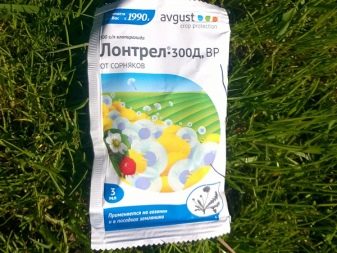
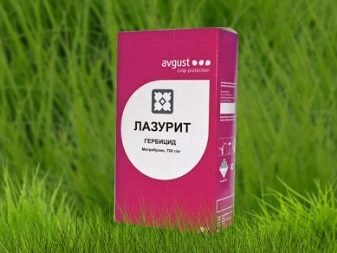







































































































The comment was sent successfully.